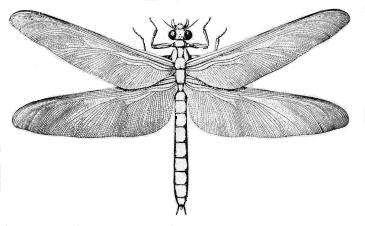Remember the late Mesozoic? Dinosaurs ruled the planet, there was no ice at the poles, plants were huge, and so were insects; and if we don’t see any giant insects on the planet – we have the early birds to thank.
In the oxygen-rich atmosphere that prevailed at the moment, giant insects thrived in the lush, luxurious jungles – until birds evolved, some 150 million years ago. From that point on, even though oxygen levels rose (which is usually associated with animal growth), insects got smaller and smaller – to the size we see today.
The biggest insects that we know of lived in the Paleozoic period, towards its end (late Carboniferous, early Permian, some 300 million years ago). Meganeuropsis permiana had a wingspan of 71 cm – bigger than the average bird we see today, while predatory griffinflies, giant dragonfly-like insects had almost 1 meter in wingspan. It is generally believed that high oxygen concentrations in the atmosphere (30 percent, compared to today’s 21), allowed them to get so big, using tiny tubes to breathe instead of lungs. But their downfall hard to avoid.
University of California, Santa Cruz scientists compiled a huge dataset of wing lengths from published records of fossil insects, and then compared this with oxygen levels over hundreds of millions of years of insect evolution, and found some interesting things.
“Maximum insect size does track oxygen surprisingly well as it goes up and down for about 200 million years,” says Clapham. “Then right around the end of the Jurassic and beginning of the Cretaceous period, about 150 million years ago, all of a sudden oxygen goes up but insect size goes down. And this coincides really strikingly with the evolution of birds.”
With predatory birds on the rise, maneuverability was vital, thus favoring a smaller body. Another significant downfall of insects occurred at the end of the Cretaceous period, between 90 and 65 million years ago. Even though a shortage of fossils makes it hard to be sure, this period coincides with a further specialization of birds.
“I suspect it’s from the continuing specialization of birds,” says Clapham. “The early birds were not very good at flying. But by the end of the Cretaceous, birds did look quite a lot like modern birds.”
Via TG Daily






